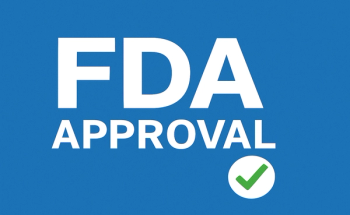
Study Summary: Use of Estrogen-Containing Contraceptives Associated With Risk of Stroke Among Women With Migraine
Background
Migraine is a disabling neurologic condition that affects approximately 36 million people in the United States, especially women between the ages of 25 and 55 years. Approximately 22% to 37% of these women experience a migraine during their reproductive years. Previous study results shown that women with migraine have a risk of ischemic stroke that is twice that of women without migraine, likely driven by the increased risk seen in women who have migraines with aura.1
The increase in risk of stroke is greatest in women with migraine younger than 45 years, who otherwise have few stroke risk factors. This increase has been associated with multiple risk factors, including smoking and use of combined hormonal contraceptives (CHCs), in particular due to the estrogen component. However, it has not been established whether the risk of stroke associated with estrogen use depends on the dose. Although the World Health Organization and the American Congress of Obstetricians and Gynecologists recommend that use of CHCs should be absolutely contraindicated in women who have migraine with aura, the International Headache Society task force recommends using caution and assessing an individual’s risks versus benefits. The authors of this systematic review sought to ascertain whether there is an association between CHC use and increased risk of migraine and whether the dose of estrogen correlated with stroke risk.1
Methods
The investigators conducted a literature search of publications through January 2016 for randomized controlled trials and observational studies that included women 18 years or older and outcomes of ischemic or hemorrhagic stroke. Specifically, they searched for studies that evaluated the use of estrogen-containing CHC (monotherapy or multidrug interventions). Of the 2480 studies identified in the initial search, 15 met the inclusion criteria and were included in the systematic review. Most of the studies were case-control studies; 2 were cohort and/or cross-sectional studies.1
Results
With regard to the incidence of migraine associated with use of CHCs, a definitive association between the use of CHC and incidence of migraine could not be established. Although a trend of higher usage of CHC in women with migraine than those without migraine was observed in several studies, none of the studies reported significant differences. However, this may be due to the studies lacking sufficient power to evaluate this association.
On the increased risk of stroke associated with use of CHCs in women with migraine, 6 studies reported odds ratios (ORs) for ischemic stroke in women with migraine who used estrogen-containing CHCs. The OR for ischemic stroke in women with migraine using estrogen-containing CHCs ranged from 2.08 to 16.9. However, there were conflicting findings between the studies as to whether CHC use in women with migraine increased the risk of stroke. The results of several studies showed that migraine and CHC use were independent factors in determining the risk for ischemic stroke, whereas the cross-sectional study by Farhoudi and colleagues noted a significant association between migraine and simultaneous use of CHCs and incidence of stroke (P = .037). The results of 2 studies showed greater use of CHCs among women with migraine who had a stroke; however, the difference between those who were using CHCs and those who were not was not significant.1
When evaluating whether the studies provided data on any association between estrogen dose and risk of stroke in women with migraine, the investigators noted that only 1 study reported a risk of stroke in women with migraine as a function of estrogen dose. The study by Chang and colleagues reported a higher likelihood of both ischemic and hemorrhagic stroke in women using high-dose estrogen oral contraceptives regardless of migraine status. Three other studies evaluated the risk of stroke as a function of estrogen exposure independent of migraine status. These studies’ findings showed a pattern of increasing risk of ischemic stroke with increasing doses of estrogen. The OR for ischemic stroke ranged from 2.9 to 4.8 for the groups using CHCs with 50 µg of estrogen, 1.6 to 2.7 for the groups using 30 µg to 40 µg of estrogen, 1.7 for groups using 20 µg of estrogen, and 0.9 to 1 in the groups using progestin-only oral contraceptives. The results of another study showed a higher risk of stroke in women who were using CHCs at the time of the study but not in those who previously used CHCs. A study by Schwartz and colleagues reported an OR of 2.08 for stroke in women with migraine using CHC with less than 50 µg estrogen. Although this study did not compare varying doses of estrogen, the OR of 2.08 is on the lower end of the range of ORs of all the studies that reported an OR for ischemic stroke in women with migraine taking any dose of estrogen (2.08 to 16.9).1
The investigators also assessed the effect of cigarette smoking on stroke risk in women with migraine exposed to CHCs. Overall, the studies that evaluated this relationship showed a greater risk of stroke in women who smoked while using CHCs than in those who did not smoke or use CHCs. The results of a study by MacClellan and colleagues showed that women who had migraine with aura who smoked and used CHCs had a 7-fold greater risk of stroke than women who had migraine with aura who did not smoke or use CHCs and a 10-fold greater risk than women without migraine who did not smoke or use CHCs.1
Conclusions
Based on the evaluation of these 15 studies, the authors reported that the use of estrogen-containing CHCs in women with migraine was associated with an increased risk of stroke, especially when high doses of estrogen (≥50 µg) were used. Although there was some evidence that the risk of stroke may be lower with lower doses of estrogen, further studies evaluating this relationship are needed to draw a definitive conclusion. The authors also noted that a study comparing the risk of stroke among doses of estrogen is warranted because risk likely varies with different doses. In the interim, the authors recommend considering progestin-only contraceptives in women with migraine or using the lowest dose of estrogen if a CHC is prescribed. However, clinicians should continue assessing the risks versus benefits of CHC use by women who have migraine with aura.1
Reference
1. Sheikh HU, Pavlovic, J, Loder E, Burch R. Risk of stroke associated with use of estrogen containing contraceptives in women with migraine: a systematic review. Headache. 2018;58(1):5-21. doi: 10.111/head.13229.
Newsletter
Stay ahead of policy, cost, and value—subscribe to AJMC for expert insights at the intersection of clinical care and health economics.





























































